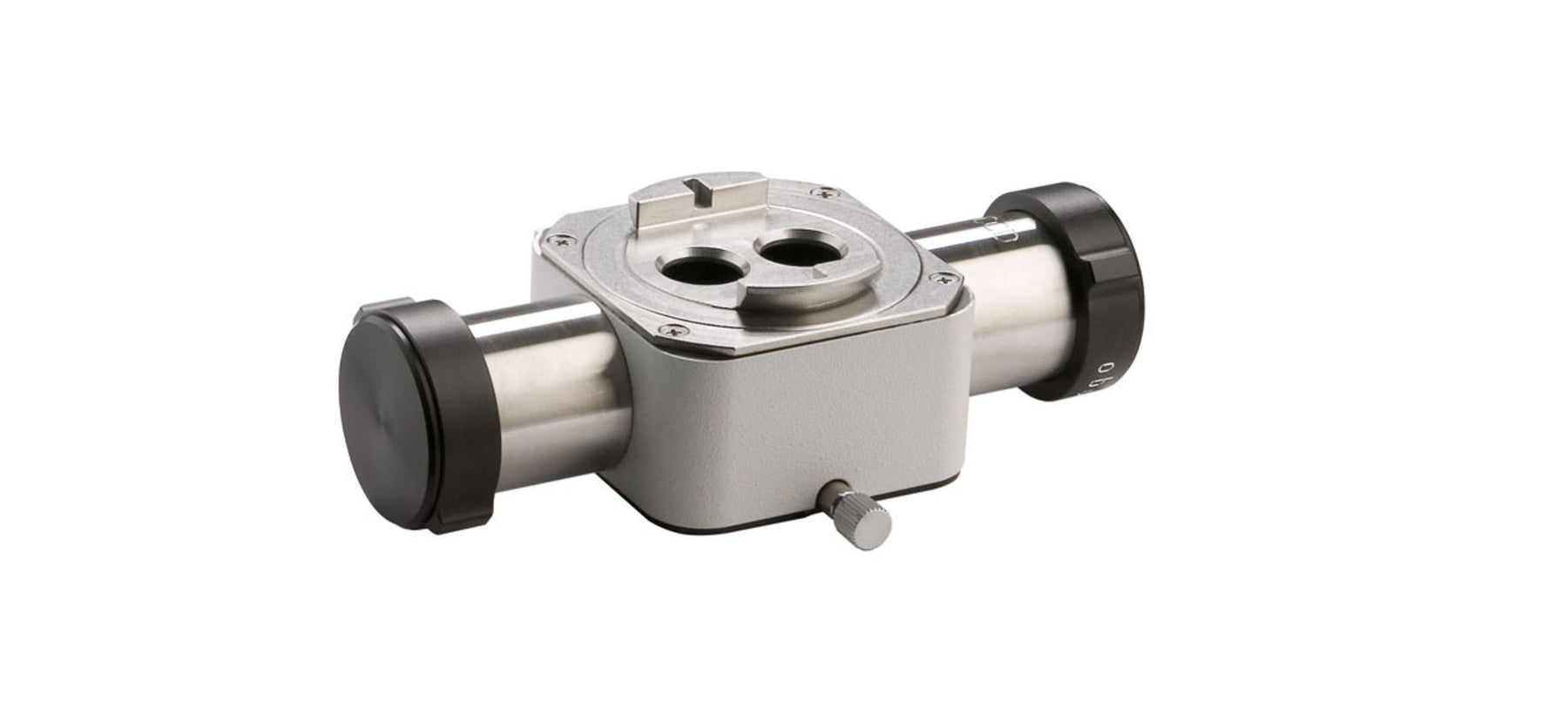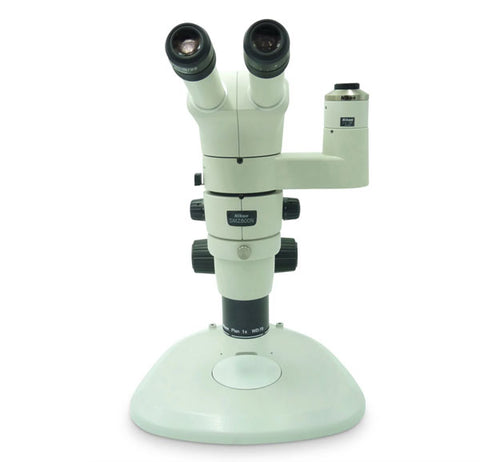
How do microscope beam splitters work?
Getting the best out of your trinocular microscope as a photographer can be tricky.
If you want to make the most of your camera port, you should first know about beam splitters – what they are and what they do.
What is a beam splitter?
A beam splitter does exactly what it says on the box – it splits beams. In this case, it splits the beam of light flowing through your trinocular microscope.
It controls how much of the light will be shared between your eyepieces and the camera port.
There’s only so much light to go around, so this can be important.
For example, you will generally want a lot of light going to the camera so you can take better pictures. But if you also want to be using the eyepieces at the same time, the camera can’t hog all the light.
In this case, you might prefer to have a splitter that sends 20% of the light to the eyepieces and 80% to the camera so that you can get well-lit photos while retaining the use of the eyepieces.
The right light ratio for your particular needs depends on a number of factors, from the brightness of your microscope’s light to the sensitivity of your camera sensor, so it can be a bit of a balancing act.

Splitter ratios
Beam splitters can come with a variety of light ratios and adjustable settings.
They are labelled with numbers like ‘30/70’, where the first number represents the percentage of the light beam that goes to your eyepieces while the second number is the percentage of light directed to your camera port.

Common ratios are 50/50, 0/100, 30/70 and 20/80. Higher end microscopes even have adjustable splitters that can have multiple settings.
Most microscopes have a small lever or switch that allows you to engage the beam splitter at will, although some lower end models have no switch and permanently split the light at 50/50.

Things to consider
Choosing the right beam splitter is usually straightforward, but there are some basic principles to consider.
For photography in general, it’s better to have more light. You get better visibility, greater detail, and you can get away with lower camera sensitivity for a better signal-to-noise ratio.
At first glance, this would make a 30/70, 20/80 or even the 0/100 splitter look like a good choice. However, the following are a few factors that can affect your decision.

Optico ASZ-810 Infinity Parallel Zoom Microscope Bundle
Using eyepieces while you snap
If you prefer to use the eyepieces while you capture images, avoid the 0/100 splitters. Without light specifically directed to the eyepieces, you won’t be able to see anything.
Illuminator
If the microscope has a particularly strong or weak light source, you’ll have to plan accordingly. For example, with a powerful illuminator, you might find that a 50/50 or lower splitter is more than enough for most applications.
Mobile microorganisms
If you’re using a 0/100 splitter to get all the light to the camera, you might run into trouble with fast-moving samples.
In the time it takes you to switch the splitter from the eyepieces to the camera, there’s a good chance your specimen will have moved out of frame or focus.
Camera sensitivity
More sensitive camera sensors won’t require as much light.
Magnification
If you’re working with higher magnifications, you’ll typically need more light.
Working off a screen
If you prefer to use a digital display or camera screen instead of the eyepieces while you’re taking photos, a 0/100 splitter might be a good pick. You won’t need any light going to the eyepieces.
Screen sharing
If you’re using the trinocular port to share your image with others, you’ll want to avoid a 0/100 splitter if you’re going to use your eyepieces at the same time.
Although it ultimately depends on your setup and equipment, a 50/50 split can be useful to ensure that everyone is seeing the same image. Similarly, if you’re sharing the image through a dimmer screen or projector, you might want a greater amount of light going to the camera port.
Conclusion
The right beam splitter can make a big difference to your photography or screen sharing. But if you know your equipment and your needs, you’ll have no trouble finding your ideal splitter.
Tip
When taking photos while using a beam splitter, be aware that stray light can enter through the eyepieces and get into the camera, producing bright spots. If this is a problem for you, try darkening your work area or simply place caps on the eyepieces.
